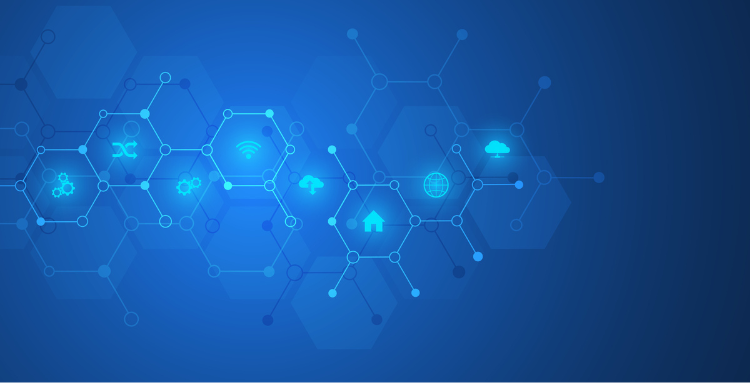In today’s competitive market, delivering personalized experiences is no longer optional—it’s essential. Customers expect brands to understand their needs and preferences, and AI-powered tools make it easier than ever to achieve this at scale. By leveraging AI for customer segmentation and personalized marketing campaigns, businesses can boost engagement, increase conversions, and build lasting customer loyalty. To enhance marketing with AI for customer segmentation and personalized campaigns, here’s your step-by-step guide to getting started.
Understand the Power of AI in Customer Segmentation
Customer segmentation involves dividing your audience into groups based on shared characteristics, such as demographics, behavior, or purchase history. Traditionally, this process was manual and time-consuming, but AI automates and enhances it.
AI-powered tools like HubSpot and Salesforce Einstein use machine learning to:
- Analyze vast amounts of customer data quickly.
- Identify patterns and trends that humans might miss.
- Create dynamic segments that update in real time.
For example, an e-commerce business can use AI to segment customers into groups like “frequent buyers,” “cart abandoners,” or “seasonal shoppers.” This allows for more targeted and effective marketing efforts.
Collect and Integrate Data from Multiple Sources
To create accurate customer segments, you need comprehensive data. AI thrives on data, so start by gathering information from various touchpoints, including:
- Website analytics (e.g., Google Analytics 4).
- CRM systems (e.g., Salesforce or Zoho CRM).
- Social media platforms (e.g., Facebook Insights).
- Email marketing platforms (e.g., Mailchimp or Klaviyo).
Integrate these data sources using tools like Segment or Zapier to create a unified customer profile. The more data you have, the better AI can identify meaningful segments.
Use AI to Identify Key Segmentation Criteria
AI can analyze your data to determine the most relevant criteria for segmentation. Common criteria include:
- Demographics: Age, gender, location, income level.
- Behavior: Purchase history, website activity, email engagement.
- Psychographics: Interests, values, lifestyle preferences.
- Technographics: Device usage, preferred communication channels.
For instance, a fitness brand might use AI to identify segments like “yoga enthusiasts,” “gym beginners,” or “high-intensity workout fans.” These insights enable highly targeted campaigns.
Leverage Predictive Analytics for Advanced Segmentation
AI doesn’t just analyze past behavior—it predicts future actions. Predictive analytics tools like Adobe Analytics and IBM Watson can forecast customer behavior, such as:
- Likelihood to purchase.
- Risk of churn.
- Potential lifetime value.
By incorporating predictive insights, you can create segments like “at-risk customers” or “high-value prospects” and tailor your marketing strategies accordingly.
Personalize Campaigns with AI-Driven Content
Once you’ve segmented your audience, it’s time to deliver personalized content. AI tools like Dynamic Yield and Optimizely help you create customized experiences, such as:
- Personalized email subject lines and product recommendations.
- Dynamic website content that changes based on user behavior.
- Targeted ads that resonate with specific segments.
For example, a travel company could use AI to send personalized vacation deals to customers based on their past bookings and browsing history.
Automate Campaign Execution
AI-powered marketing automation platforms like ActiveCampaign and Marketo streamline campaign execution by:
- Sending personalized emails at the right time.
- Triggering follow-up messages based on customer actions.
- Managing multi-channel campaigns seamlessly.
Automation ensures that your personalized campaigns run smoothly, even as your audience grows.
Measure and Optimize Campaign Performance
AI doesn’t stop at execution—it also helps you measure results and optimize future campaigns. Tools like Google Analytics 4 and Tableau provide insights into:
- Open rates, click-through rates, and conversion rates.
- Customer engagement across different segments.
- ROI of personalized campaigns.
Use these insights to refine your segmentation criteria and improve campaign effectiveness over time.
Real-World Examples of AI in Action
Many brands are already reaping the benefits of AI-powered segmentation and personalization. For instance:
- Netflix uses AI to recommend shows and movies based on viewing history.
- Amazon personalizes product recommendations and email campaigns.
- Spotify creates custom playlists like “Discover Weekly” using AI algorithms.
These examples demonstrate how AI can drive engagement and loyalty by delivering relevant, personalized experiences.
Choosing the Right AI Tools for Your Business
With so many AI tools available, it’s important to choose the ones that align with your business goals and budget. Some popular options include:
- HubSpot: For CRM and marketing automation.
- Klaviyo: For email marketing and segmentation.
- Google Analytics 4: For data analysis and insights.
- Dynamic Yield: For personalized customer experiences.
Start with one or two tools and expand as your needs grow.
By leveraging AI for customer segmentation and personalized marketing campaigns, businesses can create meaningful connections with their audience, drive higher engagement, and achieve better results. Whether you’re a small business or a growing enterprise, AI offers the tools and insights you need to stay competitive in today’s market.
Ready to get started? Explore platforms like HubSpot, Klaviyo, and Google Analytics 4 to see how AI can transform your marketing strategy. The future of personalized marketing is here, and it’s powered by AI.




